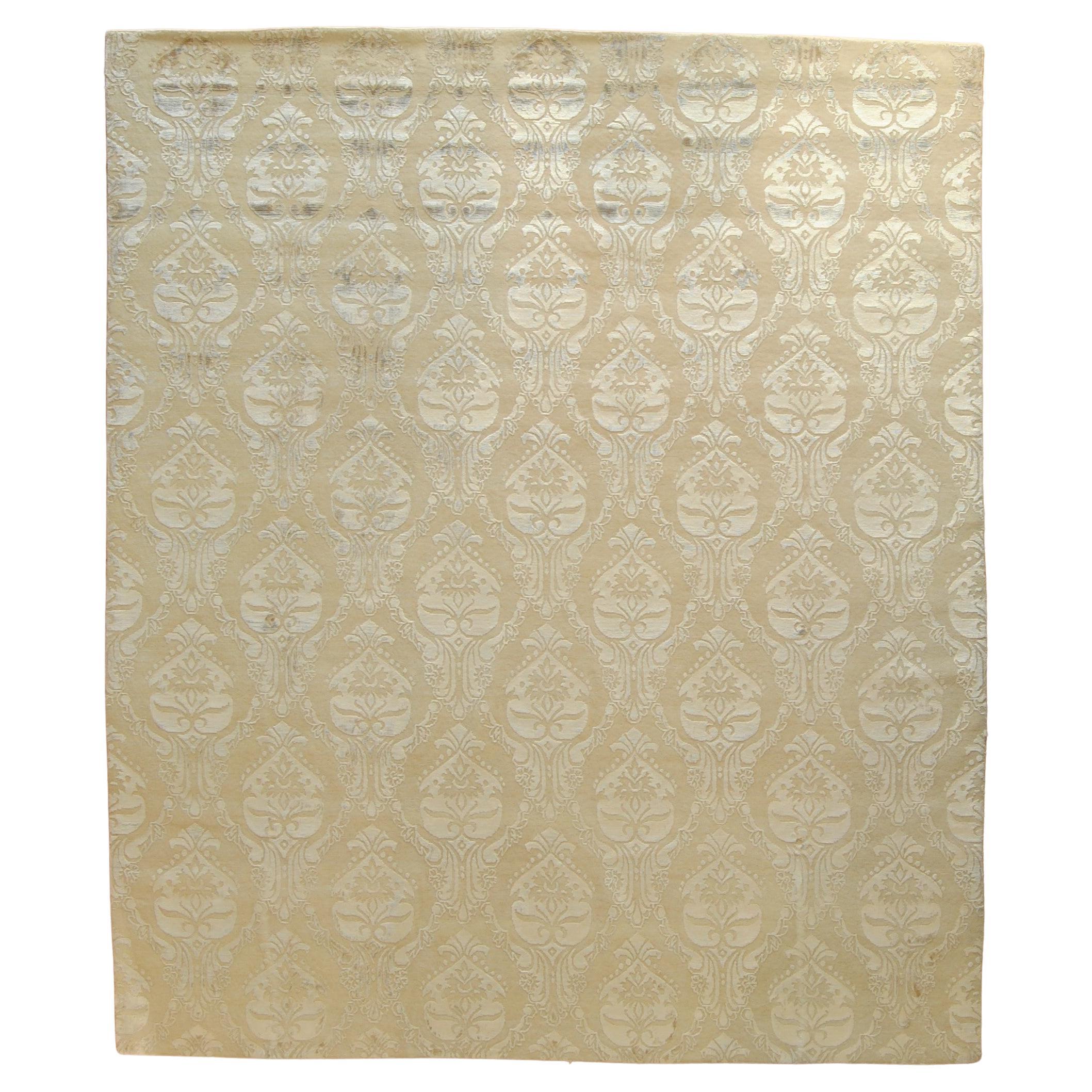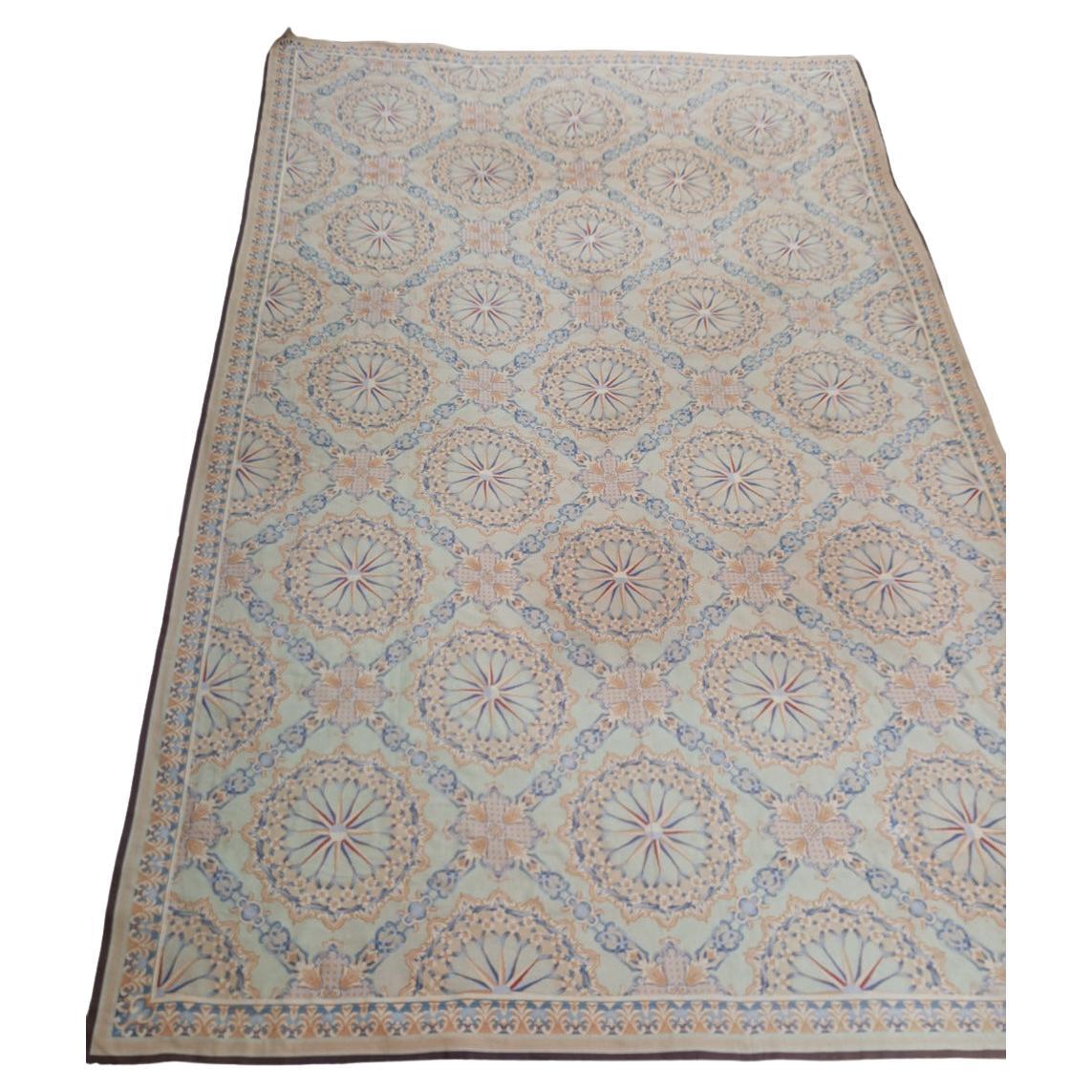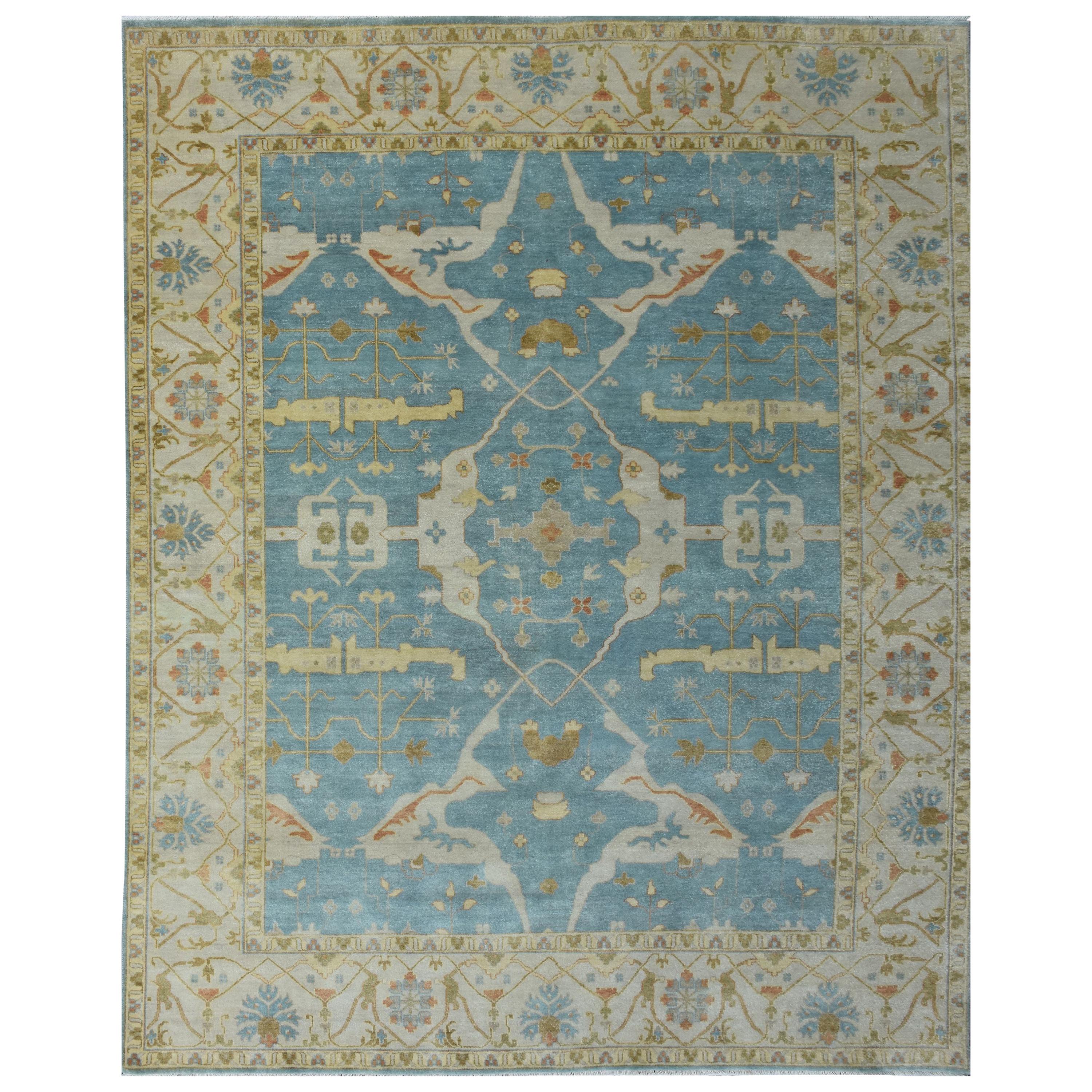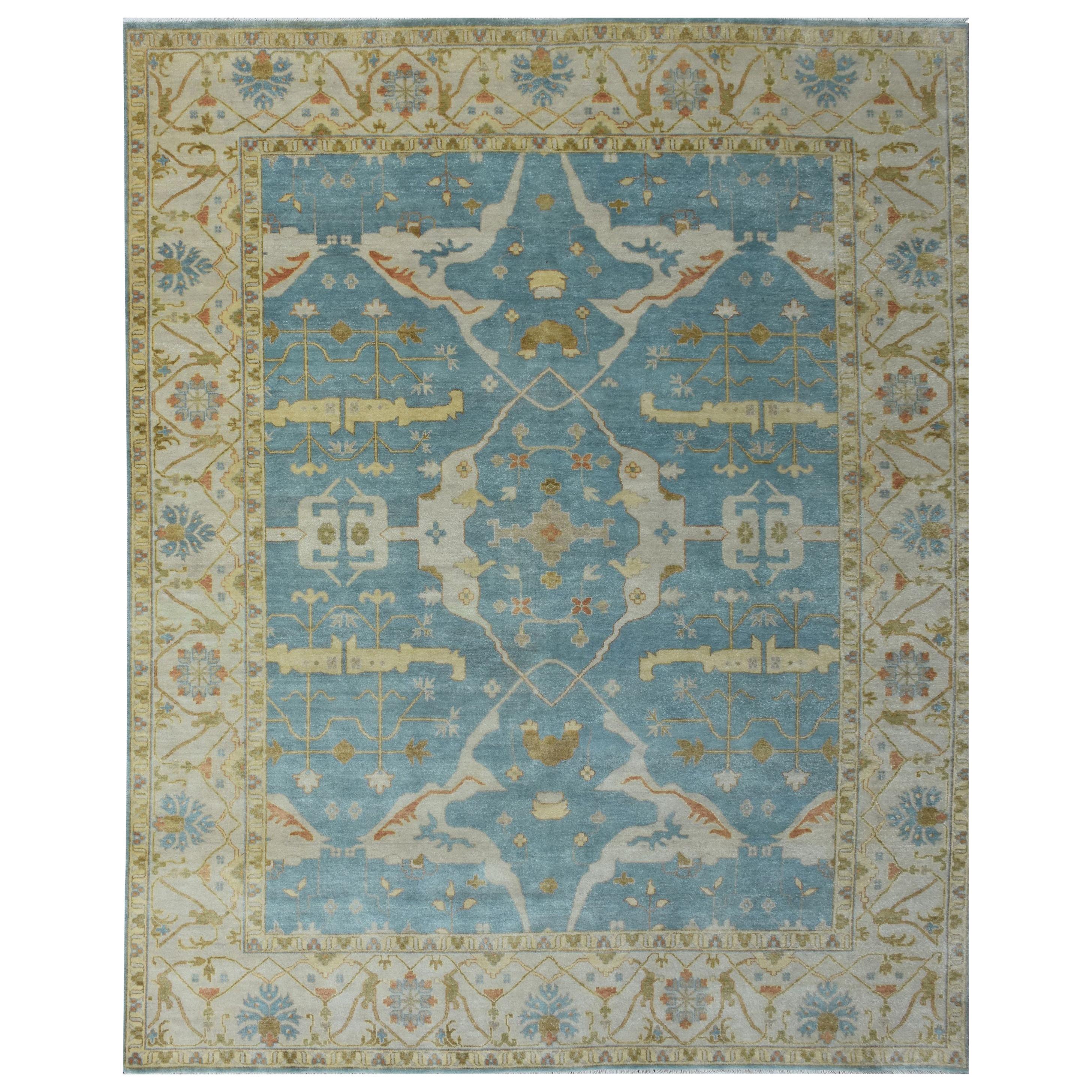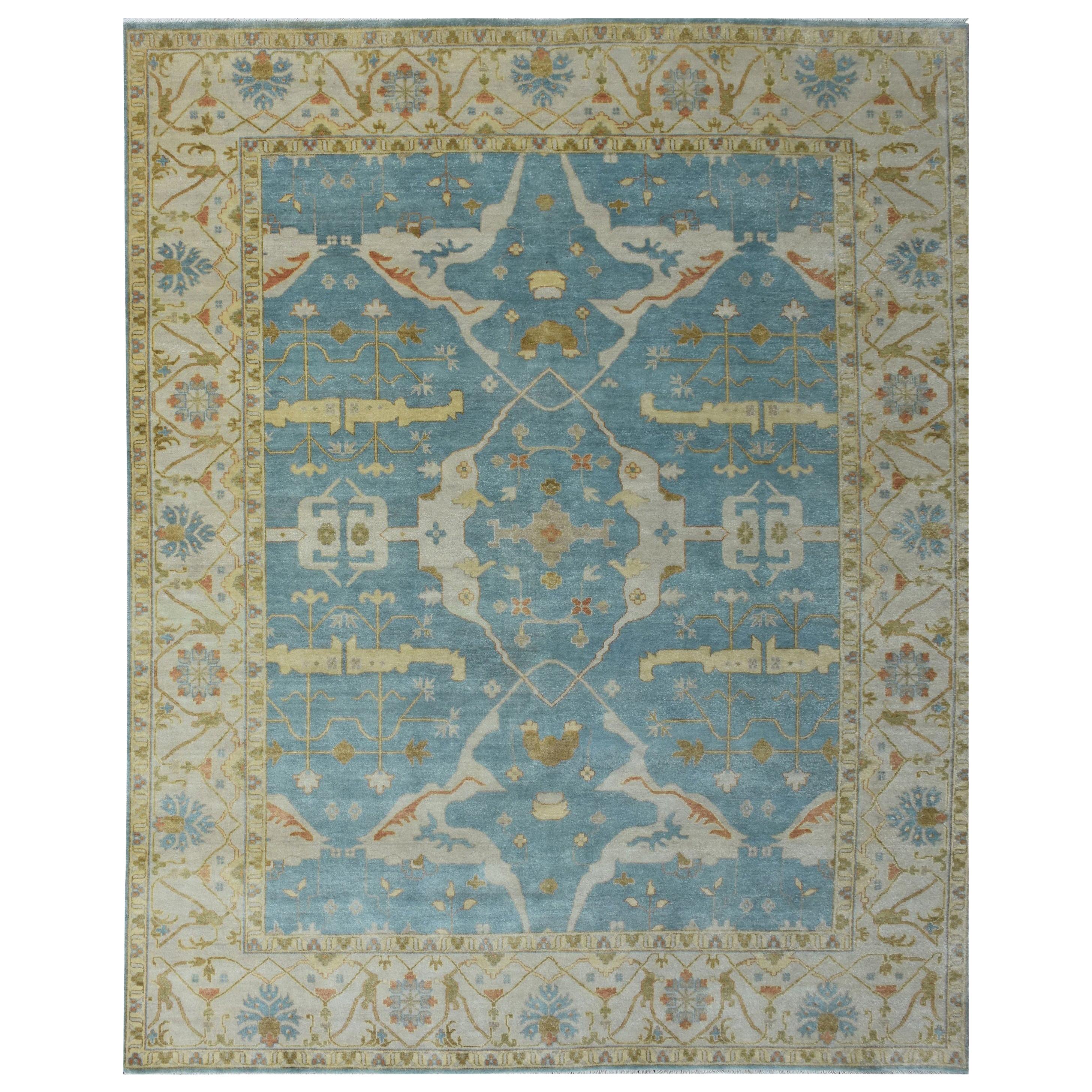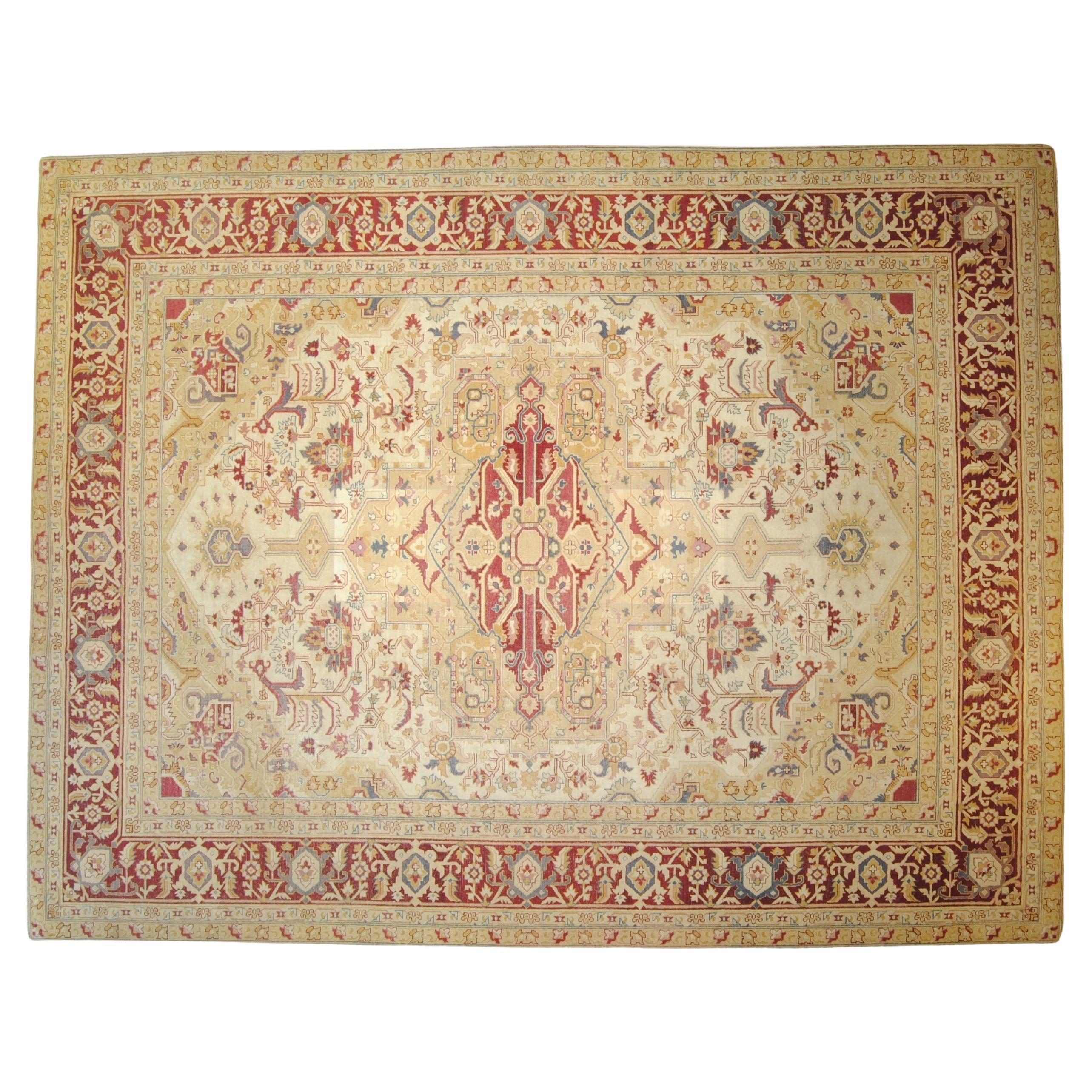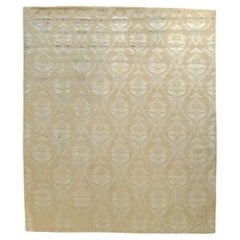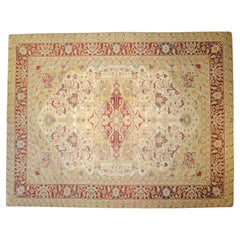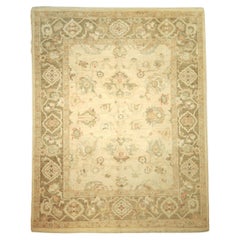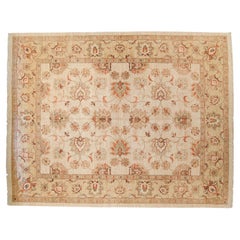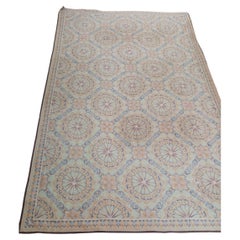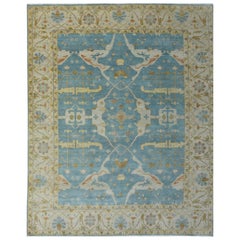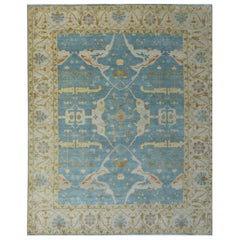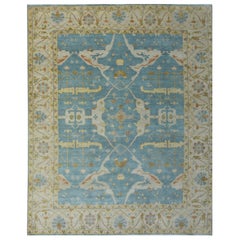Items Similar to Carpet with the pattern of ancient Mamluk carpets and light shade
Video Loading
Want more images or videos?
Request additional images or videos from the seller
1 of 18
Carpet with the pattern of ancient Mamluk carpets and light shade
$14,347.39
£10,621.40
€12,000
CA$19,853.20
A$21,887.70
CHF 11,450.94
MX$268,521.40
NOK 144,144.61
SEK 134,798.01
DKK 91,408.64
About the Item
Important contemporary production carpet made entirely by hand in Turkey, which is inspired by the famous "Mamluk" carpets. Mamluks are called Egyptian-made carpets, probably from Cairo, woven in the last period of the Sultanate of the same name that ruled Egypt, Syria and Palestine from 1250 to 1517, when it was defeated by troops of the Ottoman Empire at the height of its expansion. The typical design of these artifacts is characterized by rich ornamentation to kaleidoscopic effect, with a wide variety of characteristic motifs such as small umbrella leaves that some identify as leaves of papyrus, a typically Egyptian plant. Another characteristic of these carpets is that their complex and intricate design is made with a narrow color range, normally of only three shades: red, green, and blue, which can in rare cases go up to a maximum of 6 or 7 colors, with the addition of yellow, dark brown, and ivory white, and sometimes a shade of light blue.
- Dimensions:Width: 177.96 in (452 cm)Length: 142.92 in (363 cm)
- Style:Moorish (In the Style Of)
- Materials and Techniques:Wool,Hand-Knotted
- Place of Origin:
- Period:
- Date of Manufacture:2010 ca.
- Production Type:New & Custom(One of a Kind)
- Estimated Production Time:Available Now
- Condition:
- Seller Location:Firenze, IT
- Reference Number:Seller: 2261stDibs: LU3685135030572
About the Seller
5.0
Vetted Professional Seller
Every seller passes strict standards for authenticity and reliability
Established in 1930
1stDibs seller since 2018
32 sales on 1stDibs
- ShippingRetrieving quote...Shipping from: Firenze, Italy
- Return Policy
Authenticity Guarantee
In the unlikely event there’s an issue with an item’s authenticity, contact us within 1 year for a full refund. DetailsMoney-Back Guarantee
If your item is not as described, is damaged in transit, or does not arrive, contact us within 7 days for a full refund. Details24-Hour Cancellation
You have a 24-hour grace period in which to reconsider your purchase, with no questions asked.Vetted Professional Sellers
Our world-class sellers must adhere to strict standards for service and quality, maintaining the integrity of our listings.Price-Match Guarantee
If you find that a seller listed the same item for a lower price elsewhere, we’ll match it.Trusted Global Delivery
Our best-in-class carrier network provides specialized shipping options worldwide, including custom delivery.More From This Seller
View AllTappeto in lana e viscosa a toni naturali
Located in Firenze, IT
Loft è una collezione di tappeti dal design raffinato ed elegante. Realizzati con materie prime pregiate lavorate artigianalmente in India, i tappeti di questa collezione sono opere ...
Category
2010s Indian Islamic Indian Rugs
Materials
Wool, Cotton
India Amritsar carpet early 1900s light background and burgundy and antique pink patterns
Located in Firenze, IT
The city of Amritsar, located in northwestern India, became an Indian carpet and rug weaving center in the 19th century, when Maharaja Ranjit Singh annexed Kashmir's thriving shawl-w...
Category
Vintage 1920s Indian Agra Indian Rugs
Materials
Wool
Light-colored background rug with rotten green border traditional design without medallion
Located in Firenze, IT
This is a new generation Turkish carpet. Hand-knotted with wool warp and weft, it re-proposes in technique and decoration the classic themes of ancient Oushak rugs, but renewed in th...
Category
2010s Turkish Oushak Turkish Rugs
Materials
Wool
Large cream background rug with the patterns of ancient Agra
Located in Firenze, IT
The carpet we present is a rug with the classic Agra carpet pattern. These carpets were once produced in the ateliers of Indian courts to decorate aristocratic residences. Today the ...
Category
Early 2000s Pakistani Agra Central Asian Rugs
Materials
Wool
Early 20th Century Savonerie Rug Decorated With Flower Garlands
Located in Firenze, IT
The French manufacture of the Savonnerie was the most prestigious European manufacturer of pile-knotted carpets. The manufacture originated in a carpet factory created in a disused s...
Category
Early 20th Century French Louis XV Western European Rugs
Materials
Wool
Shahsavan tribal manufacture carpet with red background and zoomorphic motifs
Located in Firenze, IT
This carpet was made at the nomadic tribe Shahsavand moving into the northwestern provinces of Azarbaijan and Ardebil. Made using ancient techniques passed down from generation to ...
Category
Antique Early 1900s Azerbaijani Tribal Central Asian Rugs
Materials
Wool
You May Also Like
Grande tappeto a piccolo punto "needlepoint" con disegno continuativo anni ’80
Located in Firenze, FI
Tappeto lavorato a mano a piccolo punto "needlepoint" con disegno continuativo anni ’80.
Misura molto grande 6,70 m. x 4.30 m. , con varie tonalità d’azzurro, beige ed un tocco ...
Category
Vintage 1980s Chinese Chinese and East Asian Rugs
Materials
Wool
Wonderful New Oushak Design Indian Rug
Located in Saint Ouen, FR
Nice new rug with beautiful Oushak design and nice colors, entirely hand knotted with wool velvet on cotton foundation.
Category
2010s Indian Oushak Turkish Rugs
Materials
Wool
$8,369 / item
Wonderful New Oushak Design Indian Rug
Located in Saint Ouen, FR
Nice new rug with beautiful Oushak design and nice colors, entirely hand knotted with wool velvet on cotton foundation.
Category
2010s Indian Oushak Turkish Rugs
Materials
Wool
$10,162 / item
Wonderful New Oushak Design Indian Rug
Located in Saint Ouen, FR
Nice new rug with beautiful Oushak design and nice colors, entirely hand knotted with wool velvet on cotton foundation.
Category
2010s Indian Oushak Turkish Rugs
Materials
Wool
$12,553 / item
Antique carpet Israeli Bezalel with Jewish symbols
Located in Firenze, FI
Antique Israeli Bezalel carpet produced in the early 20th century at the New Art School in Jerusalem. This specimen is rich in Jewish symbols. Made from wool fleece, cotton warp and ...
Category
Vintage 1920s Israeli Western European Rugs
Materials
Wool, Cotton
Antique Turkish Silk Signed Hereke Rug 4'3'' x 6'8''
Located in New York, NY
Hereke carpets used to be only produced in Hereke, a coastal town in Turkey, 60 km from Istanbul. The materials used are silk, a combination of wool and cotton and sometimes gold or ...
Category
Vintage 1960s Turkish Turkish Rugs
Materials
Silk
More Ways To Browse
Brazil Furniture 1970s
Brutalist Table Round
Campaign Chairs
Chippendale Ball And Claw Table
Dining Chairs 17 Inch Wide
Floral Armchair
French Gold Leaf Table
Italian Neoclassical Chair
Knoll Vintage Office Chair
Large Brass Jardiniere
Luxury Pool Tables
Mahogany Demi Lune
Mid Century Modern Desk With Lock
Mid Century Modern Leather Loveseat
Paul Frankl Pretzel Rattan
Petal Chairs
Silk Wall Panels
Silver Marble Tray
